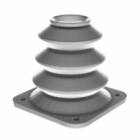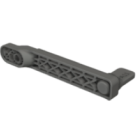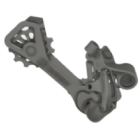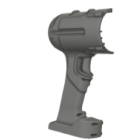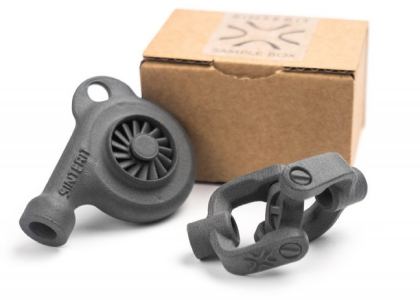How to paint 3D prints
While 3D printed parts can be impressive straight off the build plate, painting them is what truly brings them to life. Whether you’re working on prototypes, cosplay props, architectural models, or detailed miniatures, a well-executed paint job can transform even a basic print into a professional-grade final product. But to get there, you need more than just a brush and a bottle of paint — understanding materials, surface preparation, paint compatibility, and finishing methods is crucial for success.
Preparing the surface: smoothing comes first
Before diving into color choices or brushwork, surface prep is essential. Most 3D printed parts — especially FDM prints — have visible layer lines that need smoothing. Start by sanding the model with progressively finer grits (e.g., 120 → 220 → 400) to remove irregularities and prepare for coating. If the print is made from SLS nylon or SLA resin, it may require bead blasting or a light isopropyl alcohol wash instead.
After sanding, apply a primer specifically designed for plastic. Primers fill in micro-gaps and ensure the paint bonds properly to the surface. For parts with intricate detail, a spray primer works best, giving even coverage without clogging features.
What paint is best for 3D prints?
The best paint depends on the base material and the visual or functional outcome you’re after. In general, acrylic paints are the go-to for most hobbyists and professionals alike. They dry quickly, adhere well to primed surfaces, and are easy to layer. Enamel paints offer higher durability and a glossier finish, though they take longer to dry. For models exposed to wear or weather, polyurethane coatings and automotive-grade paints may be worth the investment.
You can apply paint with various tools depending on the size and detail of your part:
- brushes – ideal for small parts, details, or dry-brushing. Choose high-quality synthetic 3D print paintbrushes to avoid streaks,
- airbrushes – great for smooth gradients and large surface areas,
- spray cans – convenient and consistent, but require good ventilation and masking precision.
Types of paint and coatings for 3D prints
Different paint types and 3D print coatings offer unique benefits. Acrylics are forgiving and beginner-friendly, while lacquers provide vibrant colors and hard finishes. For metallic effects, use specialized chrome or bronze pigments over a glossy black base. If durability matters, consider clear topcoats or sealants — matte, satin, or gloss — to protect your work and enhance the finish.
List: common paint options for 3D prints
- enamel or lacquer – higher gloss, tougher, suited for ABS, resin, or coated parts.
- acrylic paint – quick-drying, water-based, suitable for PLA, ABS, PETG,
Painting techniques and finishing touches
Once you’ve chosen your paint and applied a base layer, layering and detailing come next. Use thin coats to avoid drips or loss of detail. For realistic effects, techniques like weathering, dry brushing, and washing can simulate rust, dirt, or depth. Masking tape or liquid masking can help isolate colors for clean lines, especially on multicolor parts.
For fine-detail models, like miniatures or figurines, a steady hand and a good 3D print brush set are essential. Detail brushes with a sharp tip will let you highlight edges, define eyes, or add textures.
After painting, seal your work. A final protective coat — gloss, satin, or matte — reduce scratching, improves longevity, and can dramatically alter the final appearance. Functional parts might also benefit from a 3D print coating that resists UV exposure or moisture.
Post-processing considerations
The entire painting process is part of a broader post-processing strategy. If you’re painting parts that require assembly, make sure to mask mechanical interfaces or contact points to preserve fit. Some filaments, like flexible TPU, require specialized primers to ensure paint adhesion. Additionally, high-detail models made via resin printing might need extra curing before painting.
When working with large 3D prints, plan for multiple painting stages and consider modular finishing — painting parts individually before assembly often yields cleaner results.
Summary
Painting 3D prints isn’t just decoration — it’s a vital post-processing skill that unlocks the full visual and tactile potential of your parts. By understanding materials, using the right primer and paints, and applying precise techniques with quality tools like 3D printing paintbrushes, you can turn any printed model into a showpiece. Whether you’re aiming for a polished prototype or a battle-worn miniature, the right paint strategy makes all the difference.
Explore also
- Removing supports from 3D prints
- Sanding 3D prints
- Polish 3D printed
- Sandblasting 3D prints
- How to fill gaps in 3D prints
- Priming 3D prints
- How to foiling 3D prints
- How to metal plating 3D print
Related categories




